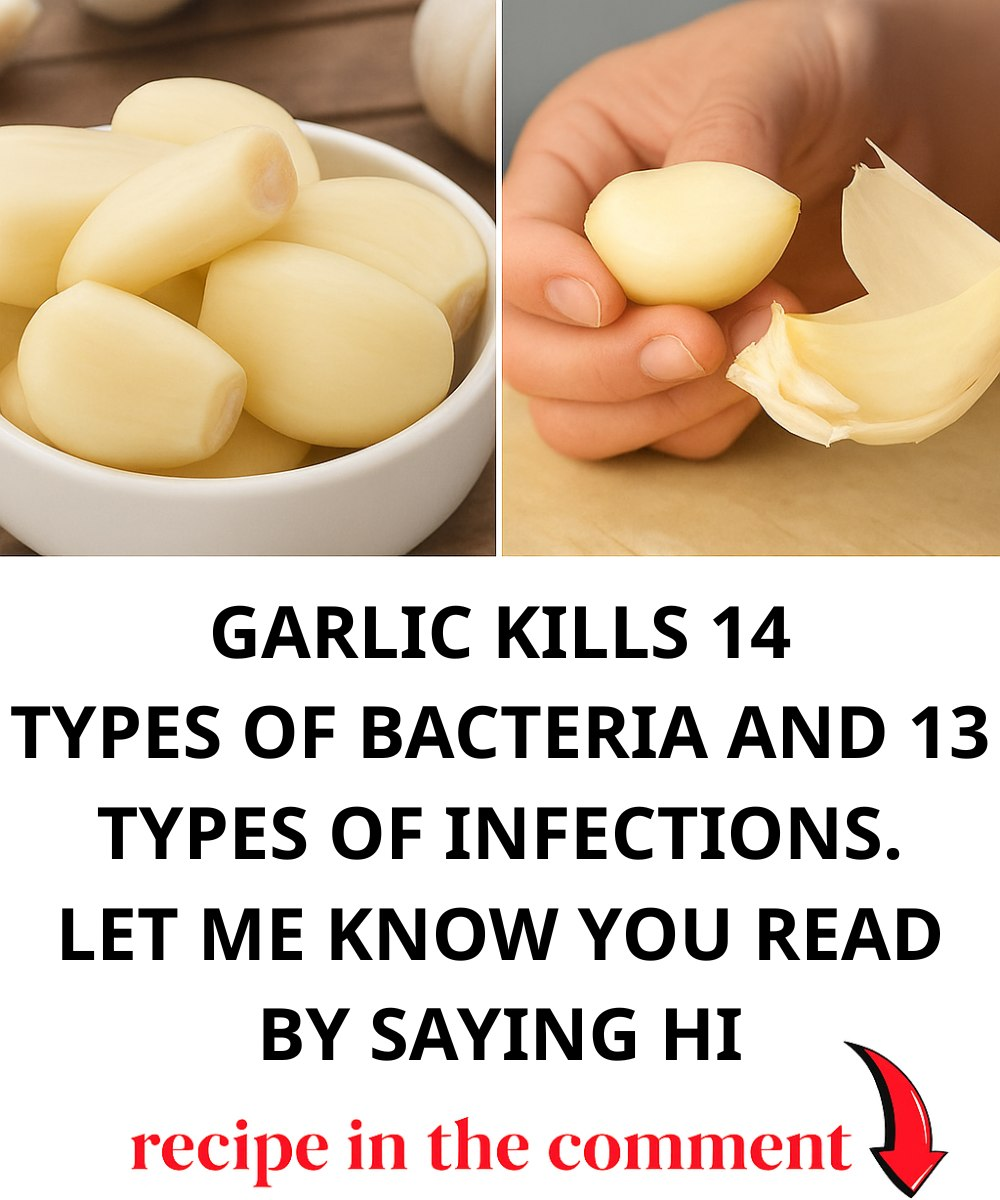Garlic. It’s the essential aromatic that defines countless cuisines, yet its role extends far beyond the kitchen. For centuries, this pungent little clove has been revered not just as a spice, but as a powerful medicine. Today, as the world grapples with the growing crisis of antibiotic resistance, researchers are looking back to nature’s pharmacy, and what they’re finding about garlic is nothing short of revolutionary.
Imagine a single, readily available, natural ingredient capable of mounting an effective defense against up to 14 types of harmful bacteria and 13 different infections. This isn’t folklore; it’s the subject of extensive modern scientific inquiry. In an era dominated by synthetic pharmaceuticals, garlic stands out as an effective, safe, and chemical-free alternative, ready to be crowned your best ally in the war against unwanted germs.
We live in a time where conventional antibiotics are prescribed with increasing frequency, leading to the unfortunate side effects we often tolerate and the far more serious global threat of drug-resistant pathogens. This is where the story of Allium sativum—common garlic—becomes incredibly compelling. This article is your deep dive into how this “super-food” not only promises to fortify your health but can also add a profound layer of flavor and therapeutic benefit to your daily life. Get ready to unlock the full potential of the world’s most accessible natural antibiotic.
🔬 The Science of Defense: Allicin and the Antimicrobial Assault
The key to garlic’s legendary power lies in its complex chemistry, specifically in the family of organosulfur compounds. The star player is allicin, an unstable, highly reactive compound. Interestingly, allicin doesn’t exist in the intact clove. It is only formed through a fascinating biochemical reaction when the clove is crushed, chopped, or chewed. This mechanical damage releases the enzyme alliinase, which rapidly converts alliin (a sulfur-containing amino acid) into allicin—the chemical signature responsible for its intense odor and, more importantly, its notable antimicrobial activity.
How Garlic Neutralizes Pathogens
The mechanism by which allicin eradicates harmful germs is multi-faceted and highly effective, making it a formidable weapon against pathogens:
1. Metabolic Interference: Allicin is known to interfere directly with the metabolism of bacteria. It targets and inactivates key enzymes—specifically sulfhydryl-containing enzymes—that are vital for a microbe’s survival and growth. By disabling these essential biological processes, allicin effectively starves and paralyzes the bacterial cell.
2. Cell Membrane Destruction: A pivotal action of allicin is its ability to increase the permeability of bacterial and fungal cell membranes. It disrupts the lipid structure of these membranes, creating weaknesses that compromise the cell’s integrity. This structural failure ultimately leads to the leakage of essential internal components and the subsequent death of the pathogen.
3. Biofilm Disruption: Perhaps one of the most critical findings in recent research is garlic’s ability to tackle biofilms. Biofilms are protective, slimy matrices formed by communities of bacteria (like Pseudomonas aeruginosa or MRSA) that make them highly resistant to conventional antibiotics. Studies have shown that garlic extracts can significantly inhibit the formation of these protective shields and even help break down existing ones, making the bacteria more vulnerable to attack.
A Broad-Spectrum Natural Ally
Beyond its well-documented antibacterial capabilities, garlic offers a trifecta of defense, positioning it as a potent, broad-spectrum ally for your entire immune system:
🍄 Antifungal Properties: Garlic is highly effective against various fungi, most notably Candida albicans, the common cause of yeast infections. Its compounds disrupt fungal cell walls and cellular respiration.
🦠 Antiviral Potential: While requiring more extensive human trials, laboratory and animal studies suggest that garlic compounds may inhibit the replication of certain viruses, including those responsible for the common cold and flu, helping to shorten their duration and severity.
This holistic action means garlic not only aids in preventing a wide array of infections but can also play a supportive role in treating existing health challenges, offering a gentle yet powerful boost to the body’s natural defenses.
🌟 More Than Microbes: Garlic’s Systemic Health Benefits
The fame of garlic is not limited to its role as a natural antibiotic. The same potent sulfur compounds that fight bacteria also deliver significant systemic health advantages that contribute to overall well-being and longevity.
Cardiovascular Guardian
Garlic’s impact on cardiovascular health is one of its most studied and celebrated benefits:
Improved Blood Circulation: Garlic acts as a natural vasodilator, encouraging blood vessels to relax and widen. This can help lower blood pressure—a major risk factor for heart disease—by reducing the overall resistance to blood flow.
Cholesterol Management: Regular consumption of garlic, particularly raw or aged extracts, has been shown to modestly lower total and LDL (bad) cholesterol levels, while potentially having a protective effect on HDL (good) cholesterol.
Anti-Platelet Activity: The sulfur compounds in garlic possess natural anti-clotting, or anti-platelet, activity. This helps prevent the formation of dangerous blood clots that can lead to heart attacks and strokes.
Ver continuación en la página siguiente
